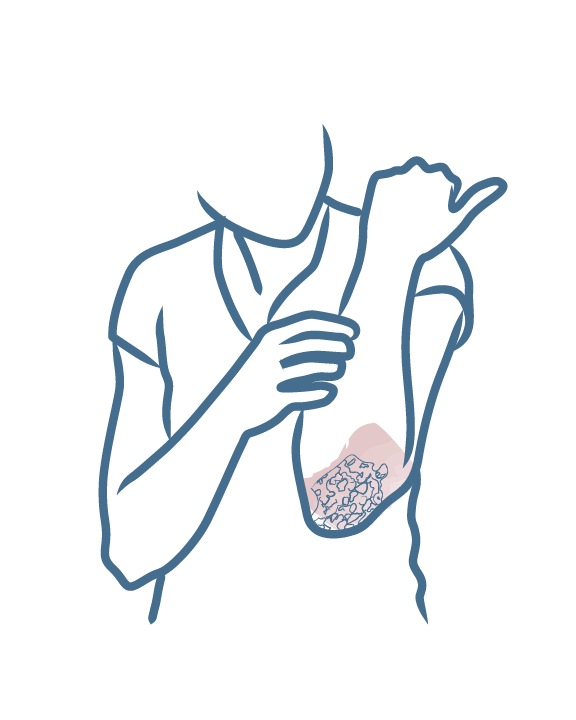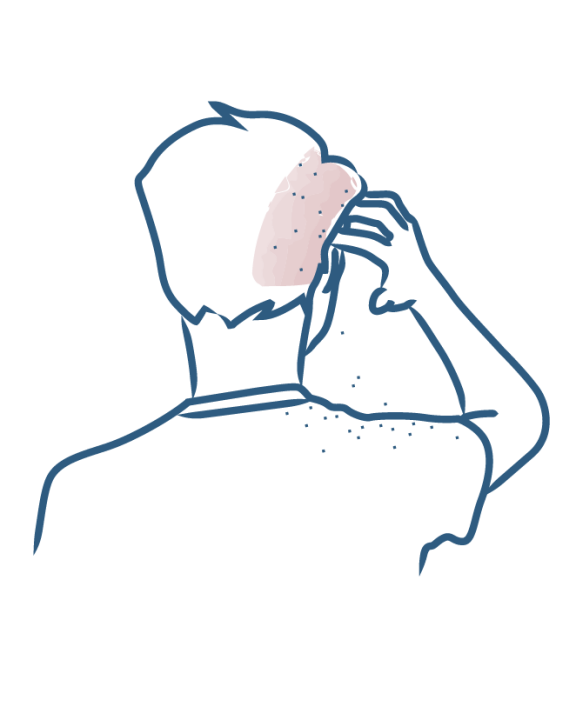Areas affected by psoriasis

Palmoplantar psoriasis
Palmoplantar psoriasis, as the name suggests, affects the palms of the hands and/or soles of the feet. It is not a very common form of the disease. This form of psoriasis occurs in isolation or in combination with other psoriasis locations like the scalp, face, knees, elbows, etc.
Palmoplantar psoriasis symptoms
In cases of psoriasis on the hands and feet, the lesions are often very dry and thick, and the skin cracks and bleeds in places. In some cases, the lesions are pustular, i.e. covered with small bubbles called pustules.
Palmoplantar psoriasis is not only unsightly but is also very debilitating on a daily basis: pain and bleeding under the feet, or between the toes or fingers, difficulty with grasping objects, putting on shoes or walking... During a flare-up, even shaking hands with someone else can be a challenge.
Psoriasis on the hands or feet can sometimes be confused with other skin diseases such as contact eczema, chronic hand eczema, fungal infections, etc. It is essential to make an appointment with a dermatologist to clarify the situation.
When psoriasis is located on the hands and feet, it can be pretty difficult to treat: you use your hands to touch and grasp objects, and you often wash them before moving from one activity to another, which can cause additional irritation, while your feet are enclosed in shoes that are not always comfortable and are subjected to severe friction.
Useful daily tips
A few simple rules should suffice to manage palmoplantar psoriasis:
- use mild cleansing products;
- avoid washing too often, for too long and in too hot water;
- hydrate your skin several times a day or as needed;
- wear gloves to protect your hands from external aggressions (rubber gloves for doing the dishes, cleaning or gardening) and also to increase the efficacy of creams by helping the active ingredients to penetrate the skin (cotton gloves).
More information
- Discover Psoriasis on the back and buttocks
Areas affected by psoriasis
Psoriasis on the back and buttocks
- Discover Scalp psoriasis
Areas affected by psoriasis
Scalp psoriasis
- Discover Ear psoriasis
Areas affected by psoriasis
Ear psoriasis
- Discover Genital psoriasis
Areas affected by psoriasis
Genital psoriasis
- Discover Psoriasis on the elbows and knees
Areas affected by psoriasis
Psoriasis on the elbows and knees
- Discover Psoriasis on the face
Areas affected by psoriasis
Psoriasis on the face
Our care routines
Psoriasis-prone skin
Dermatological expertise
To better understand your skin and hair, discover our exclusive content and innovative care products designed to improve your quality of life..


